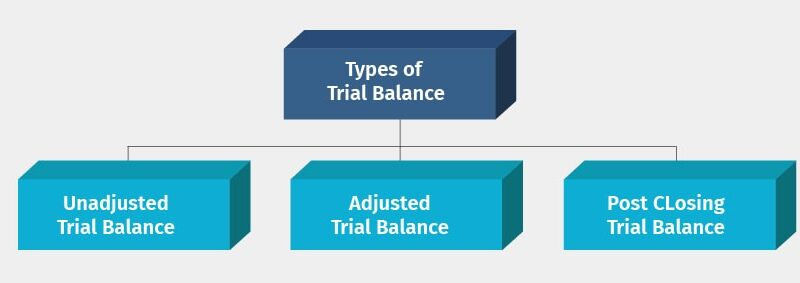Reserve Fund in Trial Balance: Meaning, Treatment & Examples
A trial balance is a critical financial tool used by accountants to ensure the accuracy of an agency’s bookkeeping information. Among the various ledger debts presented in an ordeal stability, one commonly discovered item is the reserve fund. Understanding the reserve fund in trial stability is critical for each finance college student and commercial enterprise owners alike. This article offers an in-intensity look at the which means, remedy, and examples of a reserve fund in the trial balance.
What is a Reserve Fund?
A reserve fund is an amount of cash that a commercial enterprise sets apart from its income to meet destiny uncertainties, contingencies, or liabilities. These budgets are not dispensed as dividends but are retained to bolster the economic function of the business enterprise.
Common functions for developing reserve finances include:
- Covering unexpected enterprise losses
- Funding destiny expansion or development
- Repaying long-term liabilities
- Coping with financial downturns
In brief, a reserve fund acts as an economic cushion for the business, enhancing its lengthy-time period balance.
Types of Reserve Funds
Reserve finances are broadly labeled into classes:
1. Revenue Reserves
These are constructed from the everyday income of the commercial enterprise and are to be had for distribution as dividends (until specially earmarked). Examples encompass:
- General Reserve
- Specific Reserve (e.g., Dividend Equalization Reserve)
2. Capital Reserves
These are produced from capital profits and are not commonly dispensed as dividends. Examples encompass:
- Profit on sale of constant property
- Revaluation surplus
While revenue reserves are extra usually proven inside the trial balance, capital reserves may also appear depending on the character of the transaction.
Meaning of Reserve Fund in Trial Balance
When we refer to the reserve fund in trial balance, we mean the quantity set apart as a reserve that looks as a credit score balance within the trial balance. It displays the enterprise’s reason to maintain earnings as opposed to dispensing them to shareholders.
In a trial balance, the reserve fund is dealt with as a legal responsibility or owner’s equity, relying on the structure of the business. It signifies retained income earmarked for unique or trendy purposes.
Treatment of Reserve Fund in Trial Balance
Position within the Trial Balance:
- The reserve fund in trial balance seems on the credit score facet.
- This is because it represents accumulated profits not yet allotted to shareholders however reserved for future use.
Ledger Account:
The reserve fund has its own ledger account titled “Reserve Fund A/c” or “General Reserve A/c”, which tracks all additions and deductions to the reserve.
Financial Statement Impact:
- In the Balance Sheet, it’s miles proven beneath the Reserves and Surplus heading in the liabilities segment.
- It strengthens the internet’s real worth and suggests a prudent method of control toward monetary making plans.
Journal Entry for Creating Reserve Fund
When a business enterprise decides to switch a portion of its profit to a reserve fund, the following journal access is exceeded:
CSS
Copy Edit
Profit & Loss Appropriation A/c Dr.
To Reserve Fund A/c
This access reduces the distributable earnings and increases the reserve fund.
Example of Reserve Fund in Trial Balance
Let’s remember a simple instance to understand how the reserve fund in trial stability appears:
Trial Balance as on thirty first March 2025
Account Title Debit (₹) Credit (₹) Cash 20,000 Accounts Receivable 50,000 Machinery 1,50,000 Accounts Payable 30,000 Capital 2,00,000 Reserve Fund 40,000 Sales 1,20,000 Purchases 80,000 Salaries 30,000 Rent 10,000 Total 3,40,000
In this case, the reserve fund in trial stability is ₹forty,000 at the credit score side. It suggests that the commercial enterprise has set aside this amount from its earnings for destiny use.
Importance of Reserve Fund in Accounting
1. Financial Stability
It gives a buffer in the course of durations of low earnings or surprising costs, helping the commercial enterprise hold operations smoothly.
2. Better Creditworthiness
Creditors view agencies with healthful reserve finances as financially sound and more creditworthy.
3. Dividend Management
Reserve finances can be used to maintain a consistent dividend coverage, even in years with decreased income.
4. Capital Expansion
Businesses can use accumulated reserves to fund growth without relying on external borrowing.
Common Mistakes in Recording Reserve Fund in Trial Balance
Many beginners or untrained bookkeepers may additionally commit the subsequent errors:
- Placing the reserve fund on the debit facet: It must usually appear at the credit score aspect of the trial stability.
- Not updating the reserve quantity annually: Every time a brand new reserve is created or current reserves are adjusted, the ledger and trial stability should be up to date thus.
- Confusing reserve fund with provision: A provision (e.g., provision for dubious money owed) is a liability or price, whilst a reserve fund is an appropriation of income.
Reserve Fund vs. Provision: Key Differences
Feature Reserve Fund Provision Purpose To meet future unknown liabilities To meet specific, regarded liabilities Created From Net income (after tax) Operating profit Appearance Shown under reserves in balance sheet Shown as a legal responsibility or expense Trial Balance Appears on credit score side Appears on debit or credit score relying on kind
Conclusion
The reserve fund in trial balance performs a crucial role in reflecting an enterprise’s monetary foresight and preparedness. Proper information which means, treatment, and correct placement in accounting statistics guarantees the integrity of monetary reporting.
Whether you are a scholar getting ready for accounting exams or a enterprise proprietor looking to apprehend your financials, knowing how to take care of reserve funds in trial balance accurately can give you a robust foundation in monetary literacy. Always consider: reserves are not idle cash—they may be strategic equipment for building a sustainable future.

